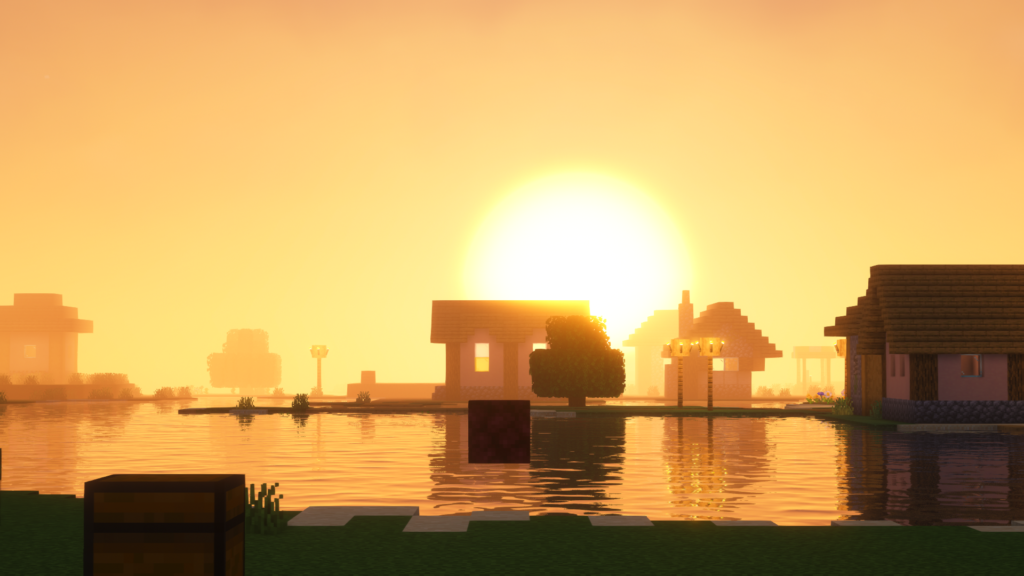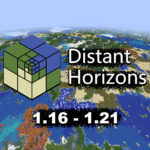Welcome to our guide on Complementary Shaders for Minecraft 1.12, focusing on version 121. These shaders add a new layer to our gameplay, making the visuals stunning. They improve the look of our Minecraft worlds and change how we play.
We’ll cover everything from system needs to how to download and install them. Our guide will help you make the most of Complementary Shaders in your games.

Key Takeaways
- Complementary Shaders significantly enhance the visual quality of Minecraft 1.12.
- Version 1.21 introduces exciting new features and improvements.
- Proper configuration can optimize performance and gameplay enhancement.
- Community feedback highlights valuable player experiences and tips.
- Alternative shader packs offer unique visual aesthetics worth considering.
Introduction to Complementary Shaders
In the world of Minecraft, shaders are key to a better visual experience. They are graphic tools that make things like lighting and shadows look better. This makes the game more beautiful.
What Are Shaders?
Shaders are tools that change how the game looks. They make things like water look real, lighting look more dynamic, and shadows look detailed. With shaders, Minecraft becomes more immersive and fun as you explore and build.
The Benefits of Using Shaders in Minecraft
Using shaders in Minecraft has many benefits that make the game more fun. Some of the main advantages are:
- Enhanced realism: Shaders make things look like real life, with realistic lighting and effects.
- Improved aesthetics: They add vivid colors and details, making the game world look stunning.
- Game graphics improvement: Shaders make the game more enjoyable, especially when exploring and building.
Shaders change how we see Minecraft, making it more captivating. They combine great graphics with engaging gameplay. This makes us love the game even more.
Getting Started with Complementary Shaders
For those eager to boost their Minecraft experience with Complementary Shaders, it’s key to know the basics. We’ll cover the system requirements for the best performance. Then, we’ll guide you through downloading and setting up shaders.
System Requirements for Optimal Performance
Before we start Using shaders, check if your system meets the needed specs. Having the right hardware ensures a smooth gaming experience. Here are the key system requirements:
| Component | Minimum Requirement | Recommended Requirement |
|---|---|---|
| OS | Windows 7 or later | Windows 10 or later |
| RAM | 4 GB | 8 GB or more |
| Graphics Card | NVIDIA GTX 660 / AMD Radeon 7850 | NVIDIA GTX 970 / AMD Radeon RX 480 |
| Java Version | Java 8 or later | Java 11 or later |
Installing Complementary Shaders
After checking your system’s specs, it’s time to download and install the shaders. Here’s a simple guide:
- Visit the official website for Complementary Shaders.
- Find the download section and pick the right version for Minecraft 1.12.
- Download the shader pack file and save it in a place you can easily find.
- Open Minecraft and go to the “Options” menu, then select “Video Settings.”
- Click on the “Shaders” button, and then click on the “Shaders Folder” button.
- Move the downloaded shader pack file into the shaders folder.
- Go back to Minecraft, choose the shader from the list, and click “Done” to apply it.
By following these steps, you’ll be able to enjoy Minecraft with a richer visual experience. With everything set up, let’s dive into the stunning worlds made better by shaders.
Complementary Shaders Minecraft 1.12 – 121
In version 121 of the Complementary Shaders for Minecraft 1.12, we see exciting updates. These updates make the game look better and feel more real. Let’s look at the main features of this new version.
Key Features of Version 121
- Enhanced lighting effects that create a more dynamic atmosphere.
- More realistic water reflections that mimic real-life physics.
- Improved cloud textures, providing a softer and more varied sky.
- Optimized performance for smoother gameplay while maintaining graphical fidelity.
- Updated shaders that offer better compatibility with various hardware setups, enhancing our gaming experience.
Comparison with Previous Versions
Version 121 has made big strides compared to earlier versions. Earlier versions had basic shaders that were groundbreaking but now seem simple. Here’s a look at how much has changed:
| Feature | Version 1.19 | Version 1.20 | Version 1.21 |
|---|---|---|---|
| Lighting Effects | Basic | Improved | Dynamic and Enhanced |
| Water Reflections | Static | Realistic | Physically Accurate |
| Cloud Textures | Simple | Defined | Detailed and Soft |
| Performance | Moderate | Improved | Optimized |
How to Configure Your Shader Settings
Setting up your shader settings can make Minecraft look amazing. By adjusting them, we can make the game look just how we like it. This guide will help both beginners and experts get the most out of their shaders.
Basic Settings for Beginners
Starting with shader settings can be a bit tricky. For new players, here are some easy steps to follow:
- Shader Quality: Choose a lower quality to keep the game running smoothly.
- Shadow Settings: Medium shadows are a good mix of looks and performance.
- Water Effects: Simple water effects can make a big difference without slowing down your game.
- Light Sensitivity: Start with basic lighting to get used to the shader effects.
These settings let us see the cool visual changes without losing performance.
Advanced Configuration Options for Experts
If you’re more experienced, you can try more advanced settings. These let you fine-tune how the game looks:
- Shadow Resolution: Bump up shadow resolution for clearer, more realistic shadows.
- Ambient Occlusion: Turn on ambient occlusion for deeper lighting effects.
- Reflections: Tweak reflection settings for a mirror-like effect on water and surfaces.
- Post-Processing Effects: Check out bloom, lens flare, and motion blur for even more visual pop.
With these advanced settings, we can make Minecraft look truly unique to us.

| Setting Type | Beginners | Experts |
|---|---|---|
| Shader Quality | Low | High |
| Shadow Settings | Medium | High |
| Water Effects | Simplified | Detailed |
| Ambient Occlusion | Off | On |
By following these steps, we can move from basic to advanced shader settings. Each change improves our Minecraft experience. Whether you’re new or an expert, tweaking shaders can make the game more fun.
Performance Tips for Using Complementary Shaders
To make the most of Complementary Shaders, we can use some performance tips. These strategies help adjust graphics settings and cut down on lag. This ensures a smoother gaming experience while keeping the visuals impressive.
Optimizing Your Graphics Settings
Getting the right graphics settings is key for better performance. Here are some adjustments we can try:
- Render Distance: Cutting down on render distance can ease the load on our hardware. This makes for a smoother experience.
- Shadow Quality: Lowering shadow quality can help keep the frame rate up without losing much visual appeal.
- Particle Effects: Reducing particle effects cuts down on processing during gameplay. This helps improve the frame rate.
Reducing Lag and Improving Frame Rates
To cut down on lag and boost frame rates, consider these tips:
- Close Background Applications: Ensure all unnecessary apps are closed. This frees up RAM and CPU for Minecraft.
- Allocate More Memory: Tweaking Java settings for Minecraft can give the game more memory. This leads to better performance.
- Use Performance Mods: Adding mods made for performance can streamline processing. This makes gameplay smoother.
Enhancing Your Minecraft Experience with Shaders
Adding shaders to Minecraft makes the game more exciting. They make the game look and feel better, making the world more alive. Players can turn their worlds into beautiful places that inspire creativity.
Creating Stunning Landscapes
Shaders make Minecraft worlds look amazing. They bring out vibrant colors, dynamic lighting, and realistic reflections. This creates beautiful scenes from magical forests to peaceful beaches.
Players can design unique worlds with these features. Every journey becomes an adventure full of beauty.
How Shaders Affect Gameplay Dynamics
Shaders make the game more immersive. Players feel more connected to the world as they explore. The new lighting and shadows change how we see and interact with things.
Even simple tasks like mining or building become more thrilling. This new look doesn’t just make the game prettier. It also opens up new ways to play and explore.
Top Alternative Shader Packs for Minecraft 1.12
For players looking to boost their Minecraft game, checking out other shaders is a great move. We’ll look at different shader packs to see what makes each one stand out. Let’s explore some top picks for Minecraft 1.12.
Comparative Overview of Shader Packs
| Shader Pack | Performance | Visual Quality | Unique Features |
|---|---|---|---|
| Sonic Ether’s Unbelievable Shaders | High | Exceptional | Dynamic shadows and realistic water reflections |
| SEUS (Sonic Ether’s Unbelievable Shaders) | Medium | Stunning | Real-world lighting and atmospheric effects |
| Chocapic13’s Shaders | Adjustable | Good | Customizable settings for various PCs |
| BSL Shaders | Medium | Great | Vibrant colors and enhanced depth |
Unique Features of Other Shader Options
Each shader pack brings something new to the table to improve the look of Minecraft. For example, Sonic Ether’s Unbelievable Shaders change the game with their lighting effects. Chocapic13’s Shaders work well on many systems, letting players with different hardware enjoy great graphics. BSL Shaders focus on bright colors and depth, making the game look rich and full.
Trying out these shaders lets us customize our Minecraft look to fit what we like best.
Community Feedback on Complementary Shaders
Players using Complementary Shaders have shared their thoughts, showing how these graphics enhancements change the game. Feedback from the community focuses on reviews and experiences. It highlights the good points and some shader issues players face.
Player Reviews and Experiences
Many players love how complementary shaders change their Minecraft worlds. Here are some key points from their reviews:
- The vibrant colors and realistic lighting truly elevate the visual experience.
- Performance has noticeably improved, making gameplay smoother across various systems.
- Players report more immersive environments, enhancing their overall enjoyment.
These reviews show a big positive effect on gameplay with complementary shaders. It’s a favorite in the community.
Common Issues and Resolutions
Even with many benefits, some players face shader issues that need fixing. Common problems include:
- Inconsistent frame rates on lower-end machines.
- Compatibility issues with certain mods.
- Graphical glitches under specific lighting conditions.
To solve these problems, here are some solutions:
- Adjust graphic settings to balance performance.
- Look for compatibility patches for mod conflicts.
- Regular updates from shader developers often fix graphical glitches.
By solving these shader issues, the community can enjoy better visuals and stable gameplay.

| Issue | Resolution |
|---|---|
| Inconsistent Frame Rates | Adjust graphics settings and use performance optimization tools. |
| Compatibility Issues | Look for compatibility patches or use shader packs designed for specific mods. |
| Graphical Glitches | Keep shaders updated and report issues to developers for fixes in future versions. |
Future Updates and Developments in Shaders
We’re excited for the future of shader updates and developments. These changes will make our gaming experience much better. They promise to make visuals more stunning and gameplay more thrilling.
What’s Next for Complementary Shaders?
There’s a lot to look forward to with future updates. Developers are working on making the game run smoother and look better. They’re focusing on things like better lighting and more realistic graphics.
Potential Improvements and Features
Here are some possible updates we might see:
- Increased compatibility with various Minecraft mods.
- Advanced water and reflection effects.
- Dynamic weather systems affecting shader performance.
- Enhanced textures and richer color palettes for landscapes.
These updates are a big deal for gamers. They’ll make Minecraft even more exciting and immersive. By adding these new features, our Minecraft experiences will get a major boost.
Conclusion
Looking back, Complementary Shaders have changed the game for gamers. They’re not just for looks; they make Minecraft more immersive. We’ve shown how these shaders turn simple blocks into stunning scenes, making the game more engaging.
We’ve given a detailed look at how to install, set up, and optimize these shaders. This helps players make Minecraft 1.12 their own. We urge both new and experienced players to try these enhancements and see how they can improve their game.
Using shaders opens up new ways to be creative and explore. It makes playing Minecraft more fun. Let’s take advantage of these amazing visuals to see Minecraft in a whole new light.
FAQ
What are Complementary Shaders for Minecraft 1.12?
Complementary Shaders are tools that make Minecraft 1.12 look better. They improve lighting, shadows, and reflections. This makes the game more immersive.
How do I download and install Complementary Shaders?
First, make sure you have OptiFine installed. Then, visit the official website or a mod repository. Download version 121 of the shaders and follow the installation guide for your Minecraft mods folder.
What are the system requirements for optimal shader performance?
For the best performance, your computer should have a mid-range graphics card like an NVIDIA GTX 960 or AMD RX 560. Also, have at least 8GB of RAM. Keeping your Java updated helps too.
What are the key features of version 121 of Complementary Shaders?
Version 121 of Complementary Shaders offers better lighting, realistic water reflections, and improved cloud textures. It also makes the game look smoother. These updates make the game more visually appealing.
How can I configure my shader settings for the best experience?
Start with default settings if you’re new. As you get more comfortable, try adjusting things like shadow quality and light intensity. This helps find the right balance between look and performance.
What performance tips can help in reducing lag and improving frame rates while using shaders?
To cut down on lag, try reducing your render distance and shadow quality. Turn off features you don’t need. Keeping your graphics drivers updated and tweaking Minecraft settings also helps.
How do shaders enhance the overall Minecraft experience?
Shaders make Minecraft look amazing, making landscapes beautiful. They increase immersion, changing how players see and interact with the game world.
What are some alternative shader packs available for Minecraft 1.12?
For Minecraft 1.12, you can try Sildur’s Shaders or SEUS (Sonic Ether’s Unbelievable Shaders). Each pack offers unique features and graphics, giving players different options based on their preferences and system specs.
What feedback has the community shared regarding Complementary Shaders?
Players love Complementary Shaders for their improved graphics and immersive gameplay. Some have noted performance issues, but adjusting settings can often fix these problems.
What future updates are anticipated for Complementary Shaders?
We can expect future updates with new weather effects, better performance, and bug fixes. Developers are working hard to add more features and improve the game based on community feedback.




Minecraft pocket edition 4k
How to work this one in Minecraft